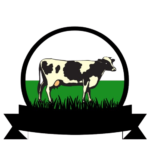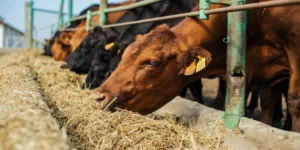
Dairy farming is one of the oldest and most significant agricultural practices, having sustained communities for generations. It involves the breeding and raising of livestock, primarily cows and buffaloes, for milk production. This practice plays an essential role not only in local economies but also in global food security. The milk produced is not just a staple in many households, but it is also rich in essential nutrients like calcium, vitamins, and proteins that contribute to human health and well-being.
While dairy farming might appear as a simple practice of milking animals, the journey from farm to table involves a complex and meticulous process to ensure the safety, quality, and sustainability of the products. This article delves into the intricacies of dairy farming, exploring its history, the challenges farmers face, the importance of modern technologies, and the role it plays in global nutrition.
A Brief History of Dairy Farming
Dairy farming dates back thousands of years. Historical evidence suggests that ancient civilizations, including the Egyptians, Mesopotamians, and Greeks, relied heavily on dairy products as part of their diet. They were among the first to domesticate animals such as cows, goats, and sheep for milk production, long before the development of modern agricultural methods.
In ancient times, dairy farming was practiced on a smaller scale, with families tending to their livestock for personal consumption. Over the centuries, as populations grew, dairy farming expanded beyond household consumption to commercial production. The industrial revolution in the 19th century brought with it significant advancements in agricultural techniques, machinery, and transportation, which enabled dairy farming to grow into a global industry.
The Role of Dairy Farming in Global Food Security
Dairy farming plays a crucial role in ensuring food security, especially in developing countries. Milk is a nutrient-rich food that provides an excellent source of protein, calcium, and essential vitamins. It forms a significant part of the diet for millions of people, providing them with the nutrients required for growth, bone health, and overall well-being.
In many developing regions, small-scale dairy farming is a vital income source. Smallholder farmers rely on the milk produced by their livestock to sustain their families and support local economies. Dairy farming offers a stable livelihood for millions of rural families, with the ability to sell milk and other dairy products in local markets.
On a global scale, dairy farming contributes to the production of a wide range of dairy products, including cheese, yogurt, butter, and powdered milk, all of which are distributed worldwide. Dairy products are crucial in regions where other sources of nutrition may be scarce. Therefore, dairy farming plays an indispensable role in global food security, providing a reliable and affordable source of nutrition for diverse populations.
Modern Dairy Farming: Innovations and Technology
While dairy farming has a rich historical legacy, the modern dairy industry has evolved dramatically, thanks to technological innovations. Today, dairy farms can range from small family-owned operations to large-scale commercial enterprises, each utilizing advanced machinery and techniques to increase efficiency and meet the ever-growing demand for milk and dairy products.
Automated milking systems, robotic milkers, and computer-controlled feed systems have transformed how dairy farms operate. These technologies have made it possible to increase milk production, improve animal welfare, and enhance the quality of milk. Robotic milking systems, for example, allow cows to be milked without human intervention. The robots use sensors to detect the cow’s teats and milk them efficiently, ensuring that milk is extracted with minimal stress to the animal.
Additionally, precision farming techniques, such as the use of sensors and data analytics, help farmers optimize their operations. By tracking cows’ health, monitoring feed intake, and predicting milk production, these systems allow farmers to make informed decisions that enhance productivity and minimize waste.
One of the most significant technological advancements in dairy farming is the development of genetic improvements in livestock. Selective breeding has enabled farmers to produce cows that are healthier, more productive, and better adapted to specific environmental conditions. Genetic testing has also improved disease resistance, helping to prevent costly outbreaks and maintain healthy herds.
Ensuring the Quality and Safety of Dairy Products
Quality control and food safety are paramount in dairy farming. Milk is a perishable product, and contamination risks can arise at various stages of production, from milking to processing and transportation. To combat these risks, dairy farms worldwide follow stringent hygiene and food safety protocols, ensuring that the milk delivered to consumers is of the highest quality and free from harmful contaminants.
Good Manufacturing Practices (GMPs) and Hazard Analysis Critical Control Points (HACCP) are critical systems that farmers and dairy processors implement to minimize risks. These systems focus on monitoring each step of the production process, from milking the cows to storing and transporting milk, ensuring that it meets health standards. Proper sanitation, regular testing for bacteria and pathogens, and maintaining optimal storage temperatures all contribute to ensuring that dairy products are safe for consumption.
Farmers also play a significant role in ensuring milk safety. They are responsible for maintaining healthy livestock, providing appropriate nutrition, and adhering to strict milking hygiene practices. Regular veterinary care, health checks, and disease prevention programs are crucial in maintaining herd health. Moreover, farmers must ensure that milk is stored in clean, sanitized tanks and kept at the correct temperature to prevent bacterial contamination.
Sustainable Practices in Dairy Farming
In recent years, sustainability has become a central focus of the dairy farming industry. As global environmental concerns increase, dairy farmers are adopting eco-friendly practices to reduce their environmental impact and ensure the long-term viability of their operations.
One key area of focus is waste management. Manure, a byproduct of dairy farming, is being increasingly used as an organic fertilizer. This reduces the need for chemical fertilizers and helps improve soil health. In some regions, dairy farms are even using anaerobic digesters to convert manure into biogas, a renewable energy source that can power farm operations.
Water management is another critical issue. Dairy farming requires significant water resources for both the animals and the crops that feed them. To address this, many farmers are implementing efficient water use practices, such as rainwater harvesting, drip irrigation systems, and the recycling of water used in cleaning and milking processes.
Renewable energy is also gaining traction in the dairy farming sector. Solar panels and wind turbines are being utilized on many farms to reduce reliance on fossil fuels. These efforts contribute to lowering the carbon footprint of dairy operations and help make farming more sustainable.
The Nutritional Benefits of Dairy Products
Dairy products are among the most nutrient-dense foods available. They are rich in essential vitamins and minerals that contribute to human health. Milk, for example, is an excellent source of calcium, which is crucial for bone health, particularly in children and the elderly. Dairy products also provide high-quality protein that supports muscle growth and repair.
Beyond bone health, dairy products are essential for the proper functioning of the nervous system, and they aid in weight management by providing long-lasting energy. The inclusion of fermented dairy products such as yogurt and kefir can also promote gut health by introducing beneficial bacteria (probiotics) into the digestive system.
Research has shown that moderate consumption of dairy products is linked to improved cardiovascular health, with studies indicating that certain dairy fats may have a neutral or even beneficial impact on heart health when consumed in moderation.
Challenges in Dairy Farming
Despite its importance, dairy farming is not without its challenges. The industry faces fluctuating milk prices, changing consumer preferences, and increasing environmental pressures. Smallholder farmers often struggle with market access and financial constraints, making it difficult to maintain profitable operations.
Climate change also poses a significant threat to dairy farming, with rising temperatures and extreme weather events impacting livestock health, feed availability, and water resources. Farmers are adapting to these challenges by implementing climate-resilient farming practices and diversifying their operations.
Additionally, the global shift towards plant-based diets has prompted concerns about the future of dairy farming. While demand for dairy products remains strong in many regions, the rise of alternative dairy products, such as plant-based milks, has created competition within the market.
Conclusion
Dairy farming is an integral part of agriculture, playing a vital role in food security, nutrition, and rural economies worldwide. With advancements in technology, better management practices, and sustainable farming techniques, the dairy industry continues to evolve to meet the demands of a growing global population.
While the challenges facing dairy farming are significant, the industry’s ability to innovate and adapt ensures that it will remain a key player in the global food system for years to come. As we move toward a more sustainable and health-conscious future, dairy farming will continue to provide essential nutrients, economic opportunities, and a way of life for millions of people around the world.

